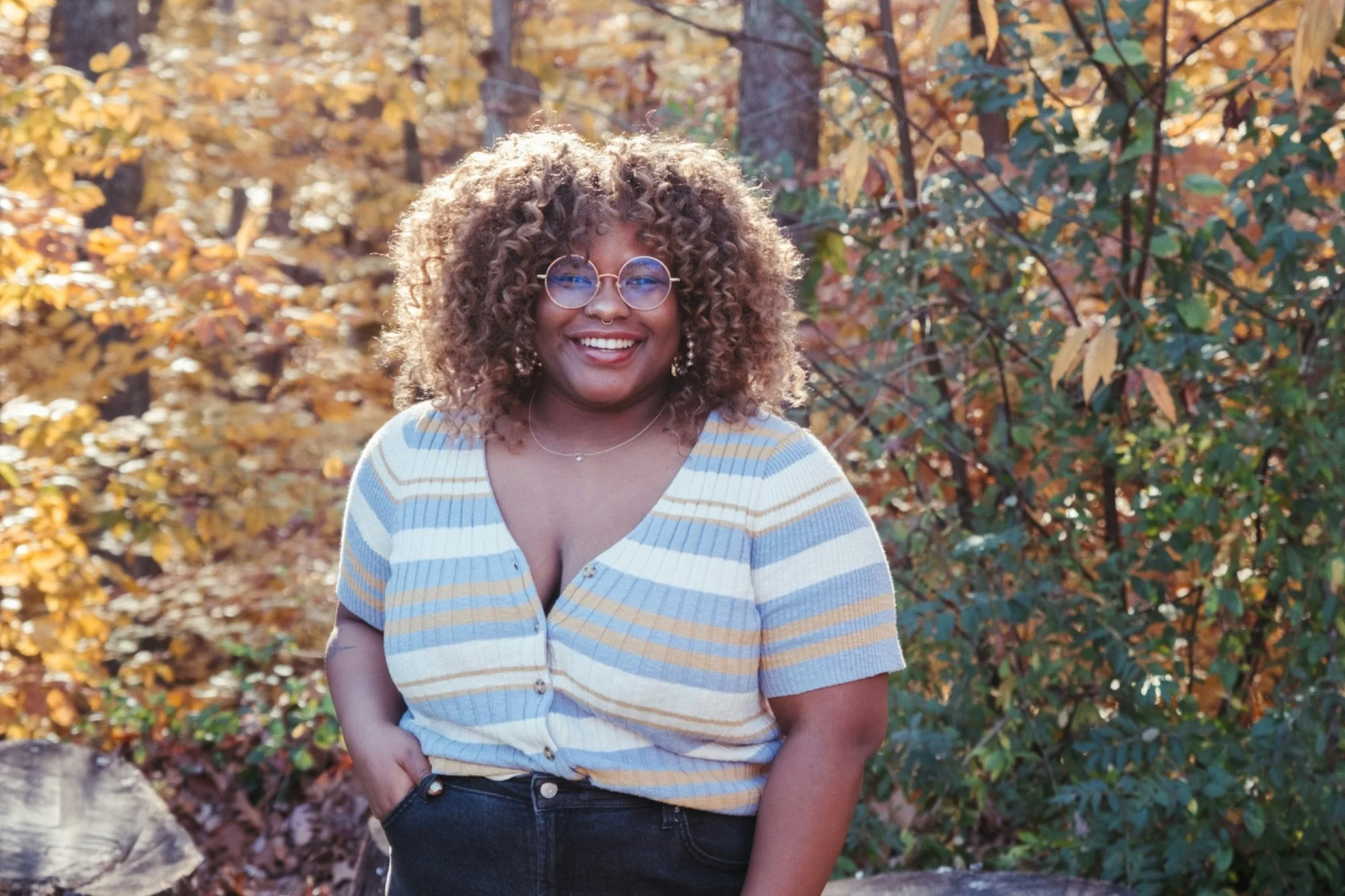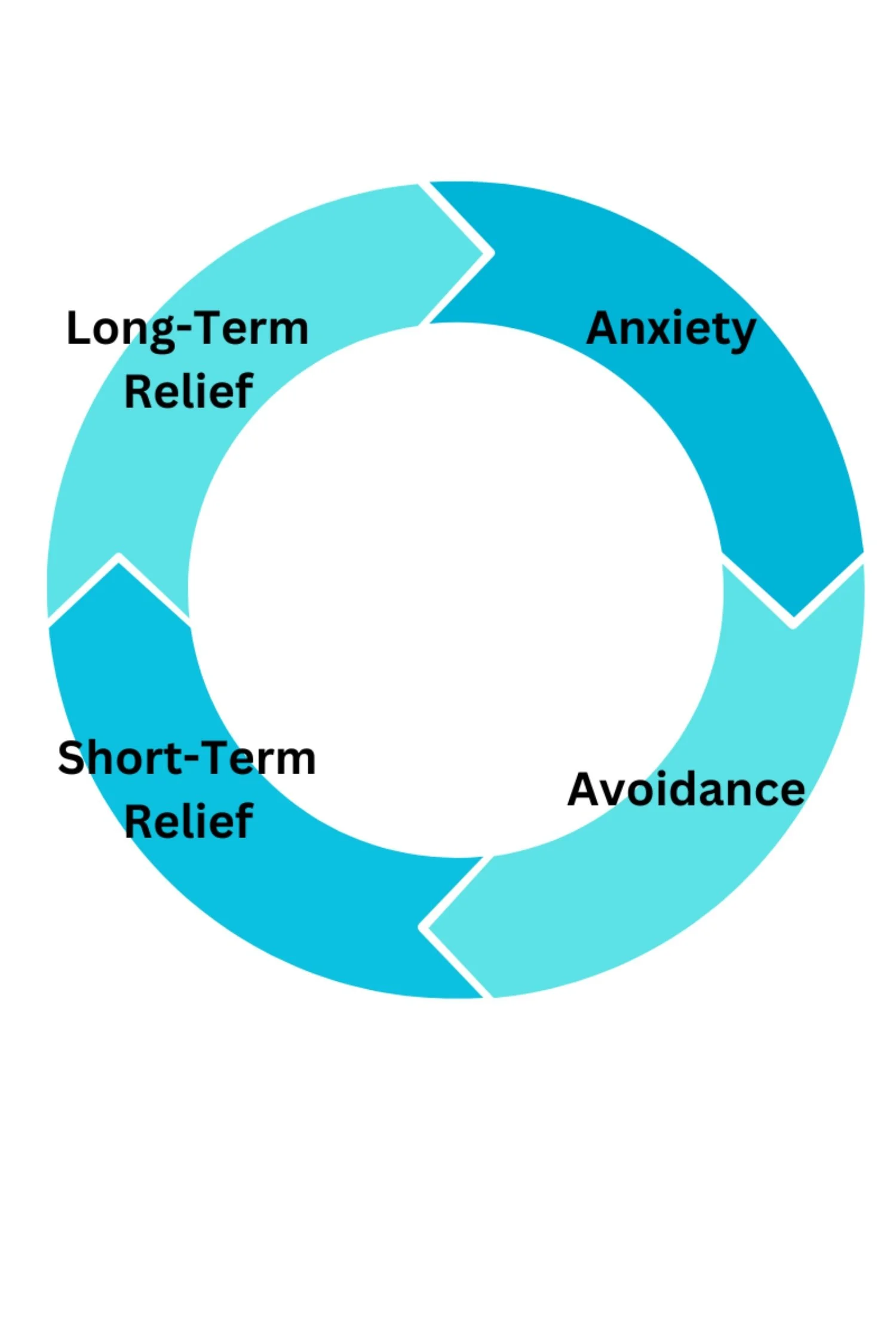The Cycle of Anxiety
Anxiety—racing heartbeat, looping thoughts, a surge of adrenaline. It can be overwhelming.
The Tendency to Avoid:
When anxiety strikes, our instinct is often to find relief. We want to calm ourselves, and it makes sense: we’re trying to feel better. But to achieve this, we tend to avoid whatever is triggering our anxiety. Whether it's making a call, sending an email, attending a social event, or making a decision, avoidance feels like the quickest path to relief.
Short-Term Relief:
Avoiding the anxiety-producing situation does provide short-term relief. We feel calmer because we’re not engaging with what’s making us anxious.
But here's the catch: in doing so, we’re reinforcing the message to our nervous system that we can’t handle the anxiety-inducing event. We’re essentially telling ourselves that we need to avoid it to feel calm.
The next time a similar situation arises, the anxiety will likely be even stronger because it’s been reinforced as something that needs to be avoided. The body responds with heightened anxiety, signaling that facing the event is dangerous because, subconsciously, we’ve communicated that “we can’t handle it.”
Long-Term Growth:
When it comes to anxiety, the goal should shift from seeking immediate relief to pursuing long-term relief.
So, what does this look like? Instead of avoiding the anxiety-producing event, we can try to move through it. It’s not easy, but by taking action—whether that means sending the email, going to the social event, or making the decision (even with the anxiety)—we show our nervous system that we can handle the discomfort.
It’s hard, but this approach focuses on growth. The goal isn’t to get immediate relief; it’s about building resilience and proving to ourselves that we can face our fears.
When looking for tools to support you in moving toward an anxiety-producing event, the shift is from using tools—like deep breathing—to decrease anxiety in order to move forward, to using tools that help you be with the anxiety while you take action.
The Power of Moving Toward Anxiety:
For long-term relief, the key is to step in rather than step out.
When you move toward an event, even with anxiety present, you’re communicating to your nervous system that you can handle the discomfort. The next time the event comes up, the anxiety won’t be as overwhelming because your body has already experienced it and survived. The situation becomes less threatening, and you’ve built confidence in your ability to manage it.
Closing the Loop, Not Just Calming the Anxiety:
From a polyvagal perspective (check out an earlier post on this), the goal is not to eliminate anxiety or simply calm it down, but to close the loop of anxiety. Instead of jumping from the sympathetic (anxiety) to the parasympathetic/ventral vagal state (calm) by avoiding anxiety-provoking events, the key is to engage with the event itself.
By moving through the event, you “close” the anxiety loop—not by making the anxiety disappear, but by taking action in spite of it. This allows your body to process the anxiety rather than suppress it. The more you engage, the less power anxiety has over you the next time. Over time, as you close more and more of the anxiety loops, you’ll gradually reduce the intensity of the symptoms, helping you to engage in your life with more ease and confidence.
Just a note: It’s important to emphasize that this approach is not about disregarding actual danger. If a situation is genuinely harmful or unsafe, the goal is not to move toward it in the name of closing anxiety loops. There are, of course, real threats out there. It’s important to name when a situation is truly dangerous or when something is causing anxiety due to perceived threats or discomfort. This method applies to anxiety-producing situations that are safe-enough but uncomfortable, not those that pose a real risk to your well-being.

